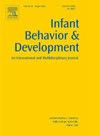在21世纪的前25年里,我们对婴儿的视觉注意力学到了什么?
IF 2
3区 心理学
Q3 PSYCHOLOGY, DEVELOPMENTAL
引用次数: 0
摘要
在21世纪初,婴儿视觉注意发展的主要观点集中在出生后第一年从刺激驱动到目标驱动的转变,反映了从皮层下控制到皮层控制的更广泛的转变。这一观点得到了数十年婴儿注视时间研究的支持。然而,在过去的25年里,我们对婴儿注意力的理解在理论进步和新的技术和方法工具的影响下发生了显著的变化。研究人员现在明白,注意力发展反映了多个相互作用的系统,这些系统在时间上具有级联效应。适合婴儿的眼动追踪方法的可用性使研究人员能够通过精确测量婴儿注视的时间和地点来考虑注意力的多个方面,新兴的刺激显著性定量模型和视觉系统的计算模型加深了我们对自下而上和自上而下对婴儿注意力的影响的理解,评估婴儿自我中心观点的新方法使研究人员能够在自然主义背景下测量注意力。因此,这些创新使我们能够解决25年前无法想象的问题。在这里,我们讨论这些进步如何改变了我们对婴儿注意力发展的理解,并概述了未来研究的关键方向,为未来25年更令人兴奋的发现铺平了道路。本文章由计算机程序翻译,如有差异,请以英文原文为准。
What have we learned about infant visual attention in the first 25 years of the 21st century?
At the beginning of the twenty-first century, the primary view of infant visual attention development focused on a transition across the first postnatal year from being stimulus-driven to goal-driven, reflecting a broader shift from subcortical to cortical control. This perspective was supported by decades of infant looking-time studies. However, our understanding of infant attention has significantly evolved over the past 25 years, shaped by both theoretical advancements and new technological and methodological tools. Researchers now understand that attention development reflects multiple interacting systems that have cascading effects across time. The availability of infant-suitable eye-tracking methods have allowed researchers to consider multiple aspects of attention by precisely measuring when and where infants look, emerging quantitative models of stimulus saliency and computational models of the visual system have deepened our understanding of bottom-up and top-down influences on infant attention, and new methods to evaluate infants’ egocentric views have allowed researchers to measure attention in naturalistic contexts. Thus, these innovations allowed us to address questions that were unthinkable 25 years ago. Here, we discuss how these advances have transformed our understanding of infant attention development and outline key directions for future research, paving the way for even more exciting discoveries in the next 25 years.
求助全文
通过发布文献求助,成功后即可免费获取论文全文。
去求助
来源期刊

Infant Behavior & Development
PSYCHOLOGY, DEVELOPMENTAL-
CiteScore
4.10
自引率
4.80%
发文量
94
期刊介绍:
Infant Behavior & Development publishes empirical (fundamental and clinical), theoretical, methodological and review papers. Brief reports dealing with behavioral development during infancy (up to 3 years) will also be considered. Papers of an inter- and multidisciplinary nature, for example neuroscience, non-linear dynamics and modelling approaches, are particularly encouraged. Areas covered by the journal include cognitive development, emotional development, perception, perception-action coupling, motor development and socialisation.
 求助内容:
求助内容: 应助结果提醒方式:
应助结果提醒方式:


